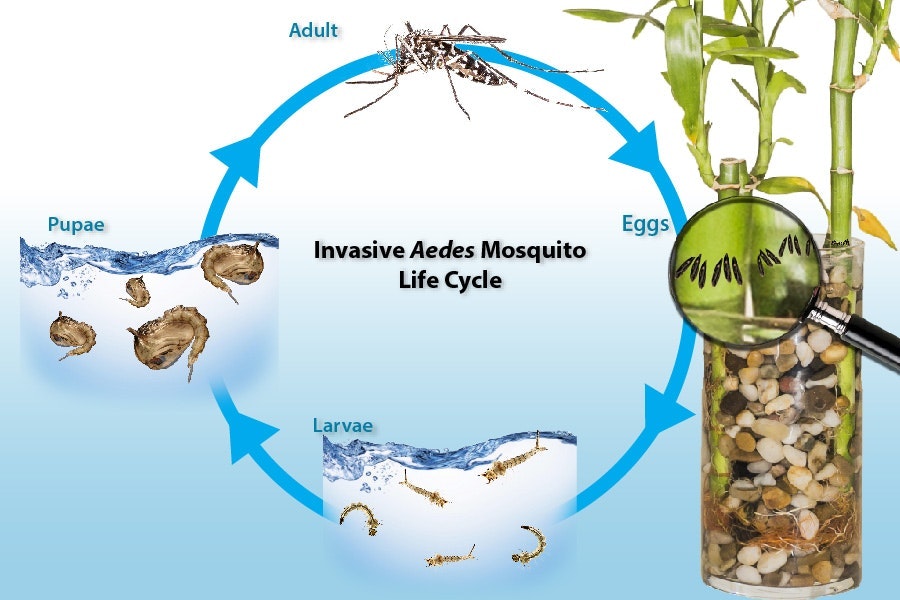Aedes Mosquitoes
Aedes are the New Mosquito in Southern California:

Invasive Aedes are small black mosquitoes with distinctive white stripes. They are not native to California but arrived in shipments of goods from other parts of the country and the world. These mosquitoes thrive in urban environments and once established become a significant pest. Aedes mosquitoes are responsible for outbreaks of dengue, chikungunya, and Zika all over the world. Now that they are in California, residents must be proactive in reducing populations and protecting themselves from mosquito bites.
Because invasive Aedes prefer to live close to humans and lay their eggs in small containers most often found in backyards, it is important for residents to regularly inspect their properties and remove containers where mosquitoes can grow.
Why Does it Matter?
Global travel and trade have opened the doors to invasive mosquitoes and specific diseases each can transmit. Because Aedes are established in California there are several tropical diseases residents could potentially be exposed to. Aedes aegypti is the primary vector of dengue and Zika and is responsible for disease epidemics throughout the Americas and the Caribbean. A local outbreak can occur when infected travelers introduce a new virus to local mosquitoes. Those traveling abroad should check the CDC’s website for Travel Warnings http://wwwnc.cdc.gov/travel/notices and follow suggested protocol to prevent mosquito bites. Many people that become infected will never develop symptoms but are still capable of transmitting the virus to local mosquitoes.
Mosquitoes Grow in Water:

Mosquitoes lay their eggs and grow in standing water. Invasive Aedes are “container breeders” and lay eggs along the waterline of water-filled containers or on the stems of aquatic plants. Any item on your property that holds water, no matter how small will grow mosquitoes. Invasive Aedes have been found growing comfortably in bottle caps and potato chip bags.
How to Stay Mosquito-Free:
Find and Eliminate Mosquito Breeding Sources:
These mosquitoes can live and complete their life cycle either indoors or outdoors. Flower vases, plant saucers, buckets, used tires, and plants that hold water like bamboo and bromeliads can grow mosquitoes. Residents should inspect their property regularly, looking for and eliminating standing water. The eggs of invasive Aedes are extremely durable and can stay dormant in dry containers for months waiting for the right conditions to hatch. For this reason containers that have been left outside for a while should be scrubbed down with a brush and warm soapy water before being thrown away or stored in a dry place.
Links to additional information about diseases Aedes mosquitoes can carry:
- https://www.cdc.gov/zika/index.html
- https://www.who.int/en/news-room/fact-sheets/detail/zika-virus
- https://www.cdph.ca.gov/Programs/CID/DCDC/Pages/zika101.aspx
- http://publichealth.lacounty.gov/acd/VectorZika.htm
- https://www.who.int/news-room/fact-sheets/detail/dengue-and-severe-dengue
- https://www.cdc.gov/dengue/index.html
- https://www.mayoclinic.org/diseases-conditions/dengue-fever/symptoms-causes/syc-20353078
